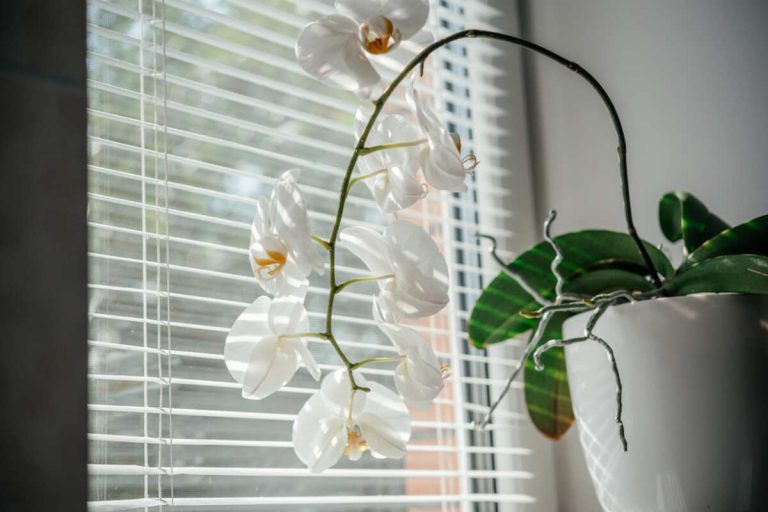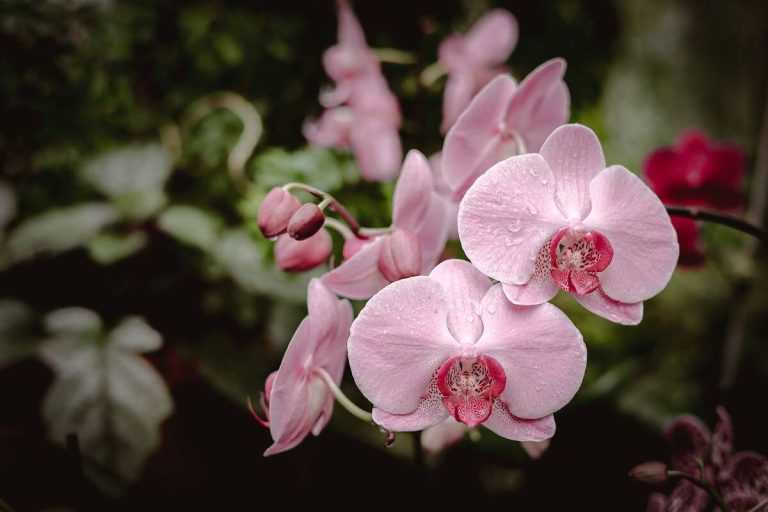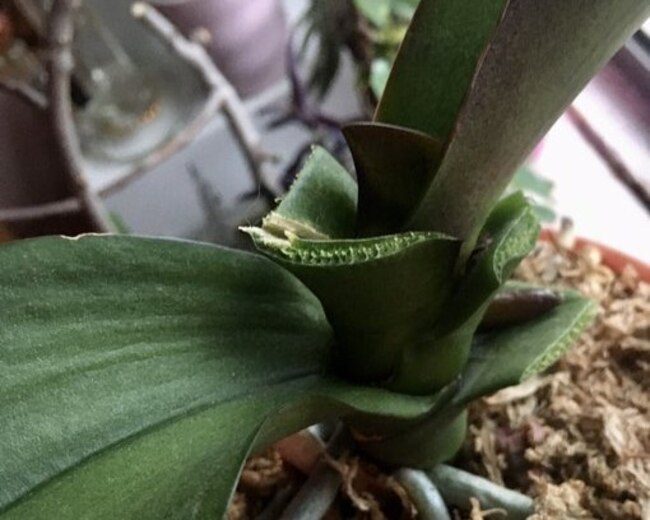Orchid Leaves Turning Yellow: 9 Main Causes and Cure

Orchid leaves turning yellow due to lack of nutrients, water, humidity or all three of these reasons. If you are out in the garden and see yellow leaves on your potted orchid, the first thing to do is replenish the humidity around it immediately and temporarily stop watering it regularly. It is necessary to intervene promptly when leaves become abnormally discolored so as not to lead to more serious problems such as sunburn, leaf loss, or even root rot. But, are there any other reasons why orchid leaves turn yellow? Let’s read on to fully discover the 9 reasons leading to this problem.
| Problem Types | Problem Descriptions | How To Prevent |
|---|---|---|
| Loss Of Moisture | Insufficient moisture can cause orchid leaves to yellow due to dehydration. | Maintain humidity and water adequately for proper moisture. |
| Improper Watering | Overwatering and underwatering can cause yellowing leaves, root rot, and dehydration. | Water thoroughly, allowing the potting mix to dry slightly between waterings to avoid waterlogged roots. |
| Sunburn | Exposure to intense, direct sunlight can cause sunburn on orchid leaves. | Place in a bright location with indirect or filtered light, avoiding direct sunlight. |
| Lack Of Nutrients | Orchids need essential nutrients for growth, and nutrient deficiency can cause leaves to yellow. | Use a balanced orchid fertilizer and adhere to a feeding schedule for necessary nutrients. |
| Wrong Amount Of Light | Orchid species have different light needs. Inadequate or excessive light can cause yellow leaves. | Identify plant’s light needs and place it in a location with the right light intensity. |
| Disease or Infection | Bacterial or fungal infections can affect orchid leaves, causing them to yellow. | Maintain a clean, well-aerated environment. Isolate and promptly treat infected orchids with suitable fungicides or bactericides. |
| Senescence | Orchid leaves naturally age and eventually turn yellow before they fall off. | This is a natural process needing no prevention. Trim unsightly yellowing leaves as needed. |
| Temperature Shock | Rapid temperature changes, especially exposure to cold drafts, stress plants and lead to leaf yellowing. | Keep a stable temperature for your orchid species, avoiding sudden changes and drafts. |
| Root Rot | Overly wet conditions or poor drainage can lead to root rot, affecting nutrient and water absorption, causing leaves to yellow. | Ensure good drainage in your orchid’s potting mix and avoid overwatering. Repot if the mix becomes waterlogged. |
Loss Of Moisture
One of the main reasons why orchid leaves turn yellow is lack of moisture. According to my long experience with plants, orchids are plants that originate from humid tropical environments, so the air around them is always humid in the range of 40% – 70%, which is the ideal humidity level for orchids growth. Low humidity can make yellowing leaf and curling.
I once planted a few pots of orchids in my house. In the summer, I often use low temperature air conditioning to cool the air. After a week, I see the orchid’s foliage gradually turning yellow, even black patches at the edges. Some of the small leaves underneath have withered first due to lack of moisture. A few days later, all my orchid pots gradually turned yellow because of dehydration.
After researching, I learned that the indoor humidity of this flower is 30% to 50%. So, to increase humidity, I bought a humidifier in the house on winter days, when low temperatures lead to dryness and loss of moisture. On hot sunny days, I often spray it with mist to add more suitable humidity for my orchid. As a result, I was successful in overcoming it and the orchid pots became stronger and the flowers bloomed larger.
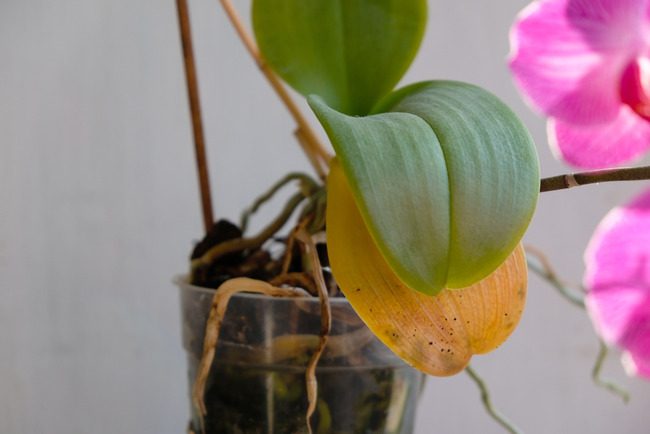
Improper Watering
Your watering routine is also the cause of your beautiful orchid leaves turning yellow. The two main problems are overwatering and underwatering. During watering, making either of these mistakes will cause discolored leaves.
Overwatering
Over-watering is a mistake I always made when I first started growing plants, including orchids because I thought the more water I had, the more my flowers would bloom. What a terrible mistake! The soil is too wet because excess moisture in the potting mix can lead to root rot, especially if the roots are left in water for too long. And of course, a damaged root system will lead to a halt in the absorption of nutrients and make orchid leaves become wrinkled and fall off.
Underwatering
On the contrary, if the soil is too dry, the roots cannot absorb enough moisture to support and hinder the process of transporting nutrients to the orchid’s leaves. Thus, the leaves are yellow and droops means a red flag of lack of water. If prolonged, the whole plant may wilt and die. To balance both of these issues, my tip is to let the potting mixture dry slightly between waterings.
Sunburn
Sunburn is the most obvious cause of orchid leaves turning yellow very quickly. Just like human skin, when we are exposed to harsh sunlight for many hours, our skin will become dark and even sunburned. The same goes for orchids. If the pot is exposed to direct sunlight, it can damage the delicate tissues of the orchid leaves.
Intense sunlight such as a torch flare can burn foliage and lead to the appearance of yellow or brown patches like sunburn wounds. To prevent sunburn, I always keep my orchids in indirect light or filtered sunlight so they can grow well without worrying about overheating.

Lack Of Nutrients
One of the indispensable things that makes the leaves turn yellow is lack of essential nutrients such as nitrogen (N), phosphorus (P), and Potassium (K). In particular, nitrogen plays an important role in the production of chlorophyll for leaves and promotes flowering stages, so I often prioritized the products that contain high nitrogen ratio to feed my orchid pots.
The best fertilizers for orchids are 30-10-10 and a balanced ratio of 20-20-20.
To reduce over-fertilization, I recommended feeding orchids every two weeks during spring and summer, and once a month in the autumn and winter. In addition to chemical fertilizer, I also create fertilizers from natural ingredients from ground eggshells or dried chicken bones. Trust me! They really bring a great amount of nutrients to your orchids.
Wrong Amount Of Light
Similar to watering, the wrong amount of light also causes orchid leaves to turn yellow. I will divide this factor into three cases to analyze for you: lack of light, excess light and the impact of direct light.
Insufficient light
If you hang beautiful orchid pots in places with low light, the fact is that green leaves and flowering stages will be slowed, and gradually wither as well due to natural photosynthesis under light hindered. Lack of “recharge source” from sunlight makes the leaves not have the ability to produce chlorophyll from electrons, this means that leaves will lose their green color and turn yellow, then all the leaves will fall and die.
Excess light
On the other hand, excessive light does not make the plant any better. What I want to remind you is not only the amount of light but also the amount of time you expose the orchid pots to light. On days when there is no sunlight, I use grow lights for orchids to replace it but only for about 12-16 hours. If you leave the light on for more than this or up to 24 hours, you will see yellow or brown spots appear on the leaves due to chlorophyll damage. In severe cases, this can even lead to splitting of the leaves.
Direct and intense light
Continuing with the above problem, intense sunlight is the direct factor that causes leaves to turn yellow due to sunburn and loss of chlorophyll. More seriously, leaving it in direct light for too long means you’ve accidentally destroyed your beautiful orchid pots! Ugly white and brown spots also appear on the foliage as a sign of the “pain” they have experienced.
In general, orchids will prefer indirect sunlight at least 6 to 8 hours, such as Phalaenopsis orchids. Therefore, the optimal solution is to research the type of orchids you are growing and provide them the right amount of light to help maintain green leaves.
It would be perfect if you placed the orchid pot near the window because the light is filtered.

Disease or Infection
If environmental factors are eliminated, the bad news is that your plant may become infected! Diseases that can be caused by viruses, fungi, bacteria or insects can cause orchid leaves to turn yellow because they disrupt the plant’s natural growth process. In my experience growing many different types of orchids, I have seen many different types of orchid diseases, all of which are manifested by yellowing leaves.
- Fungi or bacteria: Pathogens are often caused by harmful fungi, virus or bacteria that penetrate plant cells. These diseases not only interfere with the normal functioning of the plant but also disrupt the production of chlorophyll – an important factor in the production of green pigment, causing leaves to quickly turn yellow.
- Pest infection: There are many common pests such as mealybugs, spider mites, caterpillars, and some scale insects. They will attack the foliage by gradually eating plant tissue, leaving the leaves without healthy cells to grow well. During many years of gardening, I encountered many difficulties when the pest season began to rage and persistently destroy my garden, leading to severe damage to the leaves if I did not catch them in time.
I suggest using fungicides, insecticides, and bactericides according to expert instructions to avoid damage to your plants. Remember clean garden tools after each use because they contain potential risks from contamination that you cannot see with the naked eye.
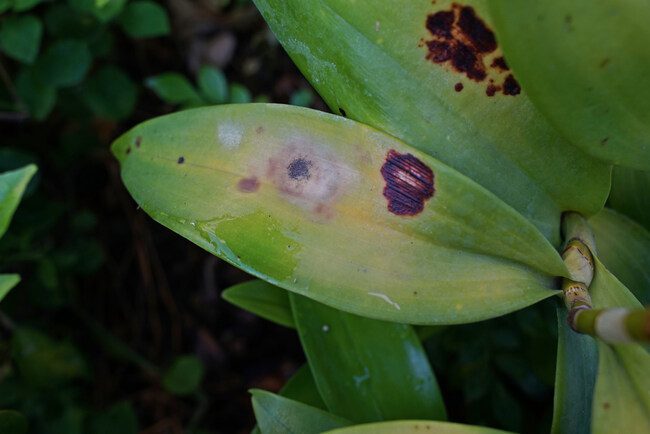
Senescence
As orchids age, their old leaves will turn yellow-brown before falling completely, a normal part of the plant’s life cycle, called aging or senescence.
Old orchid leaves are usually located on the bottom or outer part of the plant. Senescence means that resistance and organ activity will decrease. As a result, as orchid leaves get older, they photosynthesize more slowly and less effectively than new leaves, leading to the yellow color gradually spreading to the entire leaf, turning brown and falling off.
Regularly check and remove unhealthy leaves to avoid affecting other leaves and improve the overall appearance of orchid pot.
Aging is just a normal thing in natural cycles. Be careful! If you notice excessive yellowing, especially in newly emerging leaves, or brown/black spots, it could be a sign of other problems such as nutrient deficiency, diseases, or improper care.
Temperature Shock
Temperature shocks or sudden changes in the surrounding environment can cause orchid leaves to turn yellow due to stress. You should consider before deciding to move your plant pot to a new place because this will make your plant feel unhappy and it indicates by leaves turning yellow and falling off. If you want to relocate, make sure the new growing conditions of the orchid are as similar as possible to the old location.
Orchids are also temperature-sensitive plants. Similar to environmental changes, temperature is also one of them. Most orchids grow well in temperatures between 75°F and 85°F (24°C to 29°C) during the day. At night, its cool temperature can drop about 65°F (18°C) or more.
However, exceeding or lowering this range can hurt your plant. For example, I once left my orchid pot near a heater with temperatures over 100°C, and that caused the foliage to quickly turn from green to yellow and wrinkled.
To reduce these shocks, it is important to create suitable environments that fully accommodate conditions within their preferred range. To be extra sure, arrange the new area with surroundings that resemble its old habitat as much as possible.
Root rot
Root rot is the root cause of leaf problems, including yellowing leaves. As I said in the above sections, root rot in orchids hinders the plant’s ability to absorb water and transport nutrients to the entire plant. Rhizoctonia and Phytophthora are two types of fungi that cause root rot. They often thrive in conditions that are too wet or have poor drainage. That’s why waterlogging due to overwatering causes the roots to stink and kill the plant.
To prevent this problem and revive your orchid, what you need to do is change the habit of watering too much or leaving the soil too wet. Besides, equipping a pot or container with well-drainage soil and holes, attaching a tray to store excess water, is even better!

Conclusion
In summary, the leaves of orchids turn yellow due to lack of nutrients, inadequate water or light, disease, aging or rotten roots. I made these mistakes when I first started growing orchids and as a result, I had to throw away a lot of orchid pots along with the money I paid for them. But now, after learning from these 9 mistakes, my orchid pots now not only have green leaves but also bloom a lot of flowers, contributing to adding highlights to my garden. If you want to discuss more about orchids, please share them with me.
FAQs






